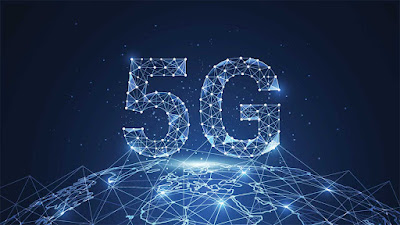Tonex, a leading training provider, offers comprehensive 5G training courses designed for professionals seeking in-depth knowledge of Fifth Generation wireless technology. These courses cover a broad spectrum of topics, including 5G architecture, protocols, security, and deployment strategies.
Tonex's 5G training equips participants with the skills to navigate the complexities of mmWave technology, network slicing, and edge computing. The hands-on approach ensures practical understanding, with a focus on real-world applications and industry trends.
Tonex's expert instructors provide valuable insights, making these courses ideal for telecom engineers, IT professionals, and decision-makers aiming to stay ahead in the rapidly evolving landscape of 5G technology.
5G Glossary
5G (Fifth Generation): The fifth generation of mobile networks, succeeding 4G LTE. 5G is designed to provide faster data speeds, lower latency, and support a massive increase in connected devices.
Millimeter Wave (mmWave): High-frequency radio waves, typically above 24 GHz, used in 5G networks to enable faster data transfer. mmWave facilitates high-speed communication but has shorter range and may be affected by obstacles.
Low-Band Spectrum: The lower-frequency spectrum (below 1 GHz) used in 5G networks, providing wider coverage and better penetration through obstacles. However, it offers lower data speeds compared to higher-frequency bands.
Mid-Band Spectrum: Spectrum frequencies between low-band and high-band, typically between 1 GHz and 6 GHz. Mid-band spectrum strikes a balance between coverage and data speed, offering a compromise between low-band and mmWave.
Small Cells: Short-range, low-power cellular radio access nodes used to enhance network capacity, particularly in densely populated areas. Small cells play a crucial role in 5G deployment, improving coverage and capacity in urban environments.
Beamforming: A technique used in 5G to focus radio signals directly towards a specific device, improving signal quality and increasing data rates. Beamforming helps in better utilizing the available spectrum.
Latency: The time it takes for data to travel from the source to the destination. 5G aims to significantly reduce latency, enabling applications such as augmented reality, virtual reality, and real-time communication.
Network Slicing: A virtual network architecture that allows the creation of multiple independent, customized virtual networks on a shared physical infrastructure. Network slicing enables the customization of networks for specific use cases, optimizing resources and performance.
Internet of Things (IoT): The interconnected network of devices embedded with sensors, software, and other technologies, capable of exchanging data. 5G facilitates the growth of IoT by providing the necessary connectivity and support for a massive number of devices.
Massive Machine Type Communication (mMTC): A feature of 5G designed to support the connectivity needs of a massive number of low-power, low-cost devices, such as sensors and IoT devices, enabling efficient communication on a large scale.
Ultra-Reliable Low Latency Communication (URLLC): A key feature of 5G that ensures high reliability and low latency for applications requiring real-time communication, such as autonomous vehicles, industrial automation, and critical infrastructure.
Mobile Edge Computing (MEC): A distributed computing paradigm that brings computation and data storage closer to the edge of the network, reducing latency and enhancing the performance of applications and services.
Network Function Virtualization (NFV): The virtualization of network functions, allowing them to run on commodity hardware. NFV is a key enabler in 5G networks, providing flexibility and scalability in deploying network services.
Dense Urban Environment (DUE): Areas with high population density and network usage, such as city centers. 5G aims to address the challenges of providing high-speed, reliable connectivity in dense urban environments through technologies like small cells and beamforming.

Comments
Post a Comment